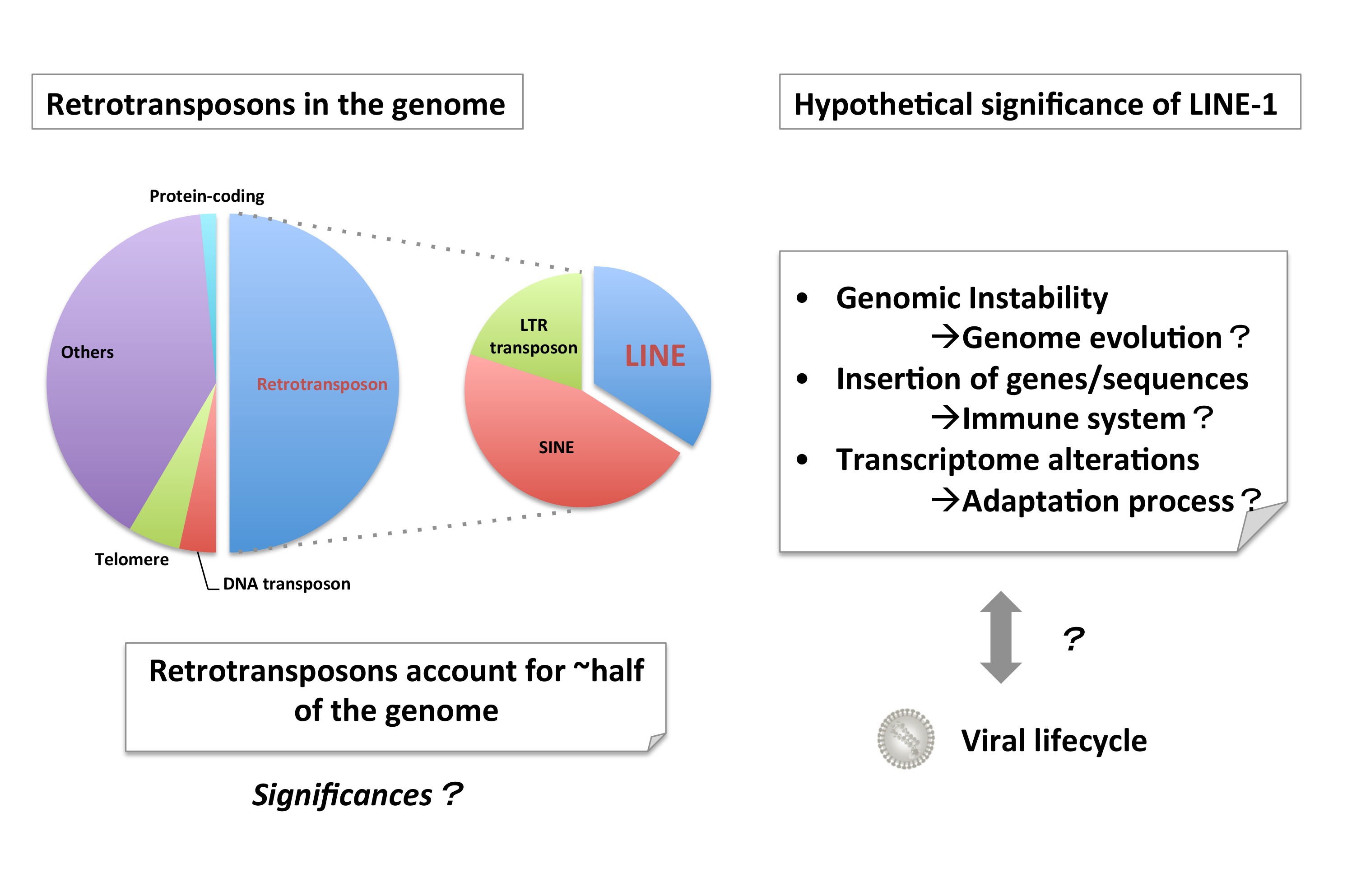
Intractions between retrotransposons and various viruses
We have found that sequences derived from Bornavirus, a negative stranded RNA virus, exist in the genomes of many mammalian species, including humans (1). Since RNA viruses usually do not have an enzyme that converts RNA into DNA, it has been thought that RNA virus will not become DNA in its life cycle. Our analysis revealed that retrotransposon in the host genome is likely to reversetranscribe DNA from Bornavirus RNA ("transcript reversion") (1). Subsequently, sequences derived from other RNA viruses have been also found in the host genome. We are doing research on the molecular mechanism of such interaction between retrotransposons and viruses.
Impact of retrotransposon-virus interactions
So, what is the impact of incorporating viral sequences into the genome on the host? In general, retrotransposition is known to change host gene expression. We found that virus-derived sequences incorporated into the genome are a target for epigenetic regulation by the host (2). Furthermore, we found that insertion of virus-derived sequences into the genome indeed changes the expression of surrounding genes (2, 3). Meanwhile, in some viruses such as hepatitis viruses, it is suggested that the interaction between retrotransposon and virus may promote carcinogenesis (4). We are trying to make clear the physiological significance of such retrotransposon-virus interactions.
Virus control by retrotransposon
Transcript reversion of the viral gene into the host genome can be reproduced by experimentally infecting animal cells with viruses. CRISPR/Cas9 system, which became famous as a genome editing tool recently, is one of the immune mechanisms of bacteria. Bacterias take the genes of infected pathogens into their genomes and use it to acquire immunity against the pathogen. Likewise, assuming the hypothesis that transcript reversion is involved in host virus control (3), we are conducting the verification.
Control of retrotransposons by virus
If the retrotransposon is able to control the virus, virus should also acquire a means to counter it. Although it is a field still quite untouched, it is gathering clues little by little. We are looking for you to study together!
References
1. Horie M, Honda T, Suzuki Y, Kobayashi Y, Daito T, Oshida T, Ikuta K, Jern P, Gojobori T, Coffin JM, Tomonaga K. Endogenous non-retroviral RNA virus elements in mammalian genomes. Nature. 2010 Jan 7;463(7277):84-7
2. Sofuku K, Parrish NF, Honda T, Tomonaga K. Transcription Profiling Demonstrates Epigenetic Control of Non-retroviral RNA Virus-Derived Elements in the Human Genome. Cell Rep. 2015 Sep 8;12(10):1548-54
3. Honda T, Tomonaga K. Endogenous non-retroviral RNA virus elements evidence a novel type of antiviral immunity. Mobile Genetic Elements 2016 Mar 22;6(3):e1165785.
4. Honda T. Links between human LINE-1 retrotransposons and hepatitis virus-related hepatocellular carcinoma. Frontiers in Chemistry 2016 May 11;4:21





